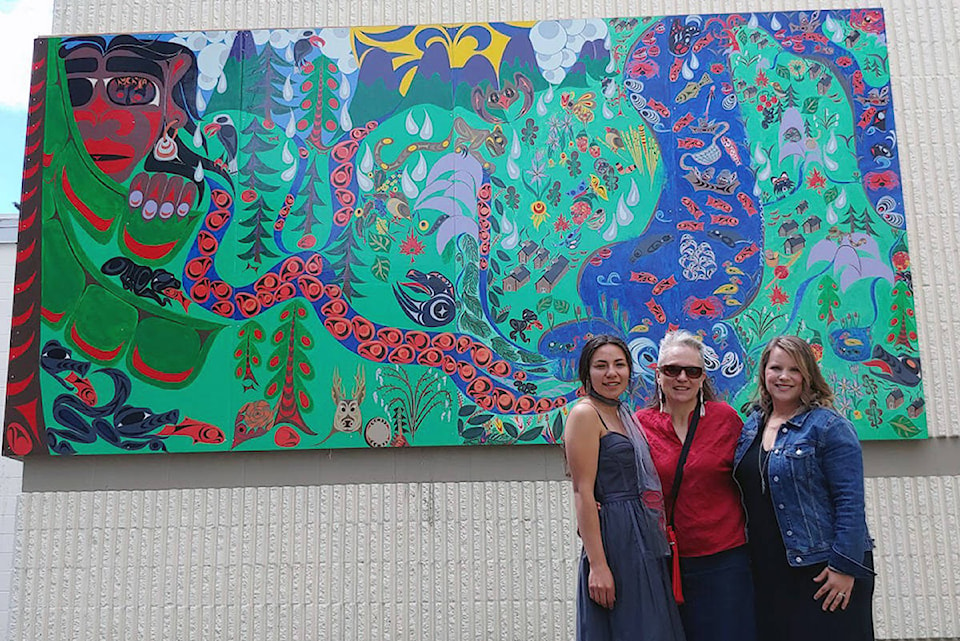A locally-created Indigenous curriculum and learning tool incorporates place-based learning with a 32-foot mural project outside Langford’s Spencer Middle School.
Seeing Through Watchers’ Eyes was created and designed by tSouke member k’Qwat’st’not (Charlene George), in collaboration with the region’s Indigenous communities, Sierra Club BC, School District 62 and Spencer Middle School’s Aboriginal Education department.
George’s mural confronts the climate crisis with the question, ‘where do we begin?’
READ ALSO: 60 per cent of all Canadian Indigenous languages are in BC
Co-respectful Indigenous community engagement facilitator Kati George-Jim says the mural and adjacent learning tool are there to help learners engage with different perspectives using place-based learning from local peoples: Esquimalt and Songhees (Lekwungen); Tslartlip, Pauquachin, Tseycum, Tsawout, and (W̱SÁNEĆ); Malahat (MÁLEXEȽ); and Beecher Bay (SCIA’NEW).
“With that focus on the local places, it ties closely to our cultural protocol of recognizing the peoples in which we are closely related to,” George-Jim says. “Not only is our connection through our families but also through the place.”
It took nine months for the mural to be painted at the middle school, located on Lekwungen territory. It is described as sharing a “complex and deep story seen through the eyes of Coast Salish practice and teaching with the Wild Man and Wild Woman.”
The mural tells the story of the land on which it lives, inviting voices and views “noticeably absent in present-day society, particularly when it comes to how we see nature and our place in it.”
It encompasses the cultures, voices and languages of the region’s communities, framing their teachings as meaningful and simultaneous in existence, rather than any one being better than another, rather giving the student or learner the opportunity to see through another’s eyes.
READ ALSO: Six Indigenous plant gardens unveiled at Victoria schools
The curriculum that comes with the mural was created using Coast Salish protocol and includes options for three different learning styles: Linear, Indigenous, and intuitive. English, Senćoŧen, Hul’q’umi’num, Klallam, tSouke, Lekwungen and Nuu-chah-nulth languages are used to tell the story, “designed to bridge cultures by creating common ground through sharing images, stories, audio clips and videos, leading to common understanding.”
“[It] raises the bar on what we can expect from meaningful relationships and being present in these spaces unapologetically in a way that truly represents the heart of our communities, our women and our knowledge holders who are really keeping this knowledge safe,” George-Jim says. “It is an honour to do this work and anyone who has been a part of this can say this is an investment for our future and for others to build on.”
Explore Seeing Through Watchers’ Eyes online at sierraclub.bc.ca/watcherseyes/.
nina.grossman@blackpress.ca
Follow us on Instagram Like us on Facebook and follow us on Twitter.
